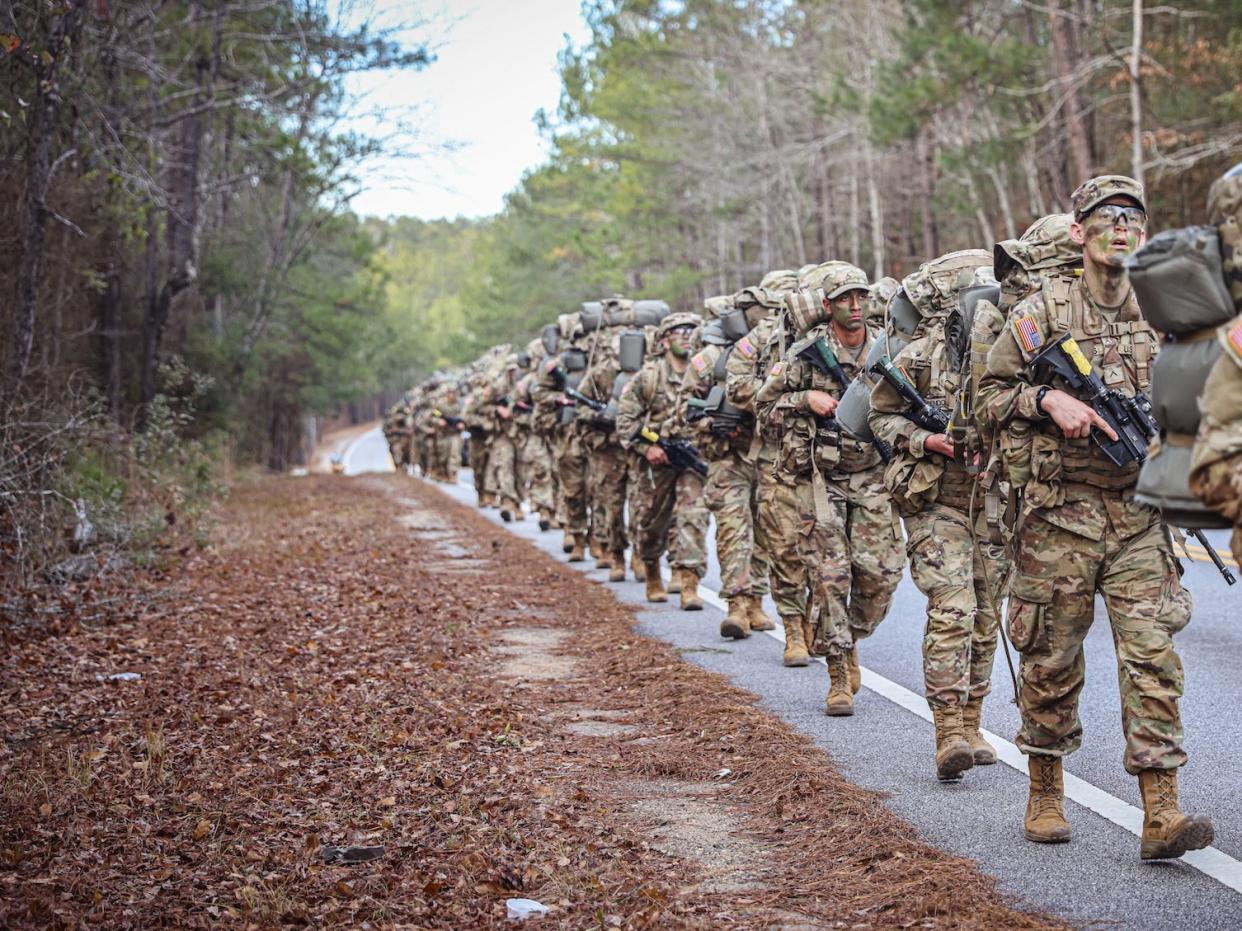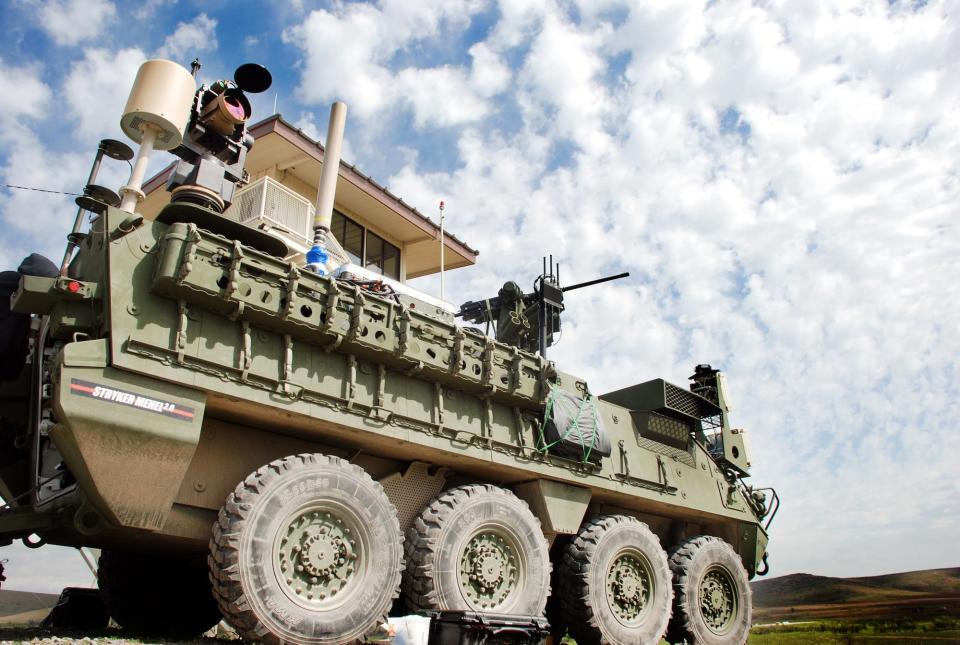The US Army's new plan to counter Russia and China has a glaring problem, experts say

The US Army's new structure responds to drones and guided missiles and artillery.
But the Army plans to stand up new units at a time its recruiting is struggling.
The Army is also basing its plans on untried weapons, the Congressional Research Service warned.
The US Army is reorganizing to fight against major powers like Russia and China, but it lacks the troops and new recruits to carry it out, congressional analysts contend.
The 2024 Army Force Structure Transformation would be the Army's fifth major reorganization since 2003. Judging by details laid out in an Army white paper, the emphasis will be on responding to technological changes in warfare, such as the threat of drones and long-range guided munitions, while trying to economize on scarce manpower.
But that may be easier said than done. "It is one thing to establish the authorizations for new and existing units discussed in the Army's white paper, yet another to fill those authorizations with qualified soldiers," warns a new report by the Congressional Research Service, which analyzes issues for Congress.
The most striking aspect of the Army's plan is the large number of new units, for counter-drone protection as well as air and missile defense. These units, assigned to corps- and division-level formations, would include four more "indirect fire protection capability" battalions intended to shoot down cruise missiles, rockets, and artillery and mortar shells. In addition, there would be nine counter-small UAS batteries tasked with destroying small drones, and four more Maneuver Short Range Air Defense (M-SHORAD) battalions to stop manned aircraft, helicopters and drones.
These would help flesh out the Army's five Multi-Domain Task Forces, theater-level units with exotic capabilities such as hypersonic missiles, cyberwarfare, jamming, and integrating intelligence data. At the same time, the Army is trying to address a recruiting crisis that has left some units undermanned. The transformation plan would reduce authorized strength — the maximum number of soldiers allowed — from 494,000 to 470,000. The Army currently has about 450,000 active-duty troops. In contrast, the US Army had 770,000 soldiers in the latter stages of the Cold War, when it was structured to counter the Soviet Union.
"The Army will shrink excess, largely unmanned 'hollow' force structure and build new formations equipped with new capabilities needed for large scale combat operations," the Army white paper explained. This would include 3,000 fewer authorized special operations forces personnel. Some functions will also be consolidated, such as reassigning engineers from brigade combat teams to divisions, which would allow fewer engineer slots.
But even with consolidation and a boost to recruitment — including new warrant officers who specialize in recruiting — the Army may not be able to find enough personnel to fill out its existing units and create new air defense formations. In 2023, the Army came up 10,000 short in its quest for 65,000 new recruits.
"Given past recruiting shortfalls and preliminary FY2024 recruiting data, it is difficult to predict if the Army will be able rectify its recruiting challenges in the near and long term," CRS said.
The Army may also be focusing too much on cutting-edge "soft" technologies rather than old-fashioned kinetic weapons that have proven quite relevant and lethal in the Ukraine war. "The Army white paper appears to address technology-based, non-kinetic space and cyber effects, long-range precision fires, and force protection more than it does conventional close-combat force capabilities, Army Special Operations Forces capabilities, and Security Force Assistance capabilities," said CRS.

The Army is also basing its plans on untried weapons, such as the Long-Range Hypersonic Missile and air defense lasers. "Some units, such as LRHW batteries and Directed Energy (DE) SHORAD units, do not have mature weapons and technologies," CRS warned. Nor does the Army — or Congress — have a good idea of how much the reorganization would cost.
Inevitably, there will also be disruptions caused by yet another Army metamorphosis. In 2003, the Army switched from a Cold War force structure of heavy mechanized divisions, to smaller, lighter brigades more suitable for counterinsurgency. Now, the Army has gone full circle as it reconfigures for Cold War-style mechanized conflict against big opponents like Russia and China. At the same time, it must also incorporate new technologies such as drones and long-range artillery, which have demonstrated their power in the Ukraine war.
The reorganization does address some of the Army's problems, Mark Cancian, a senior advisor at the Center for Strategic and International Studies, told Business Insider. "The new units are appropriate for a great power conflict. China and Russia have much stronger air and missile forces than the regional opponents the army has faced for the last generation."
Creating units armed with hypersonic missiles also makes sense, especially since Russia and the US withdrew in 2019 from the Intermediate-Range Nuclear Forces treaty, signed in 1987 to curb cruise missiles and other medium-range nuclear weapons.
"The long-range fires are an opportunity that has opened up with the end of the INF," Cancian said. Nonetheless, the reorganization doesn't address the real issue. "The Army's major problem is that it is too small overall to meet all of its likely peacetime and wartime commitments," said Cancian.
Michael Peck is a defense writer whose work has appeared in Forbes, Defense News, Foreign Policy magazine, and other publications. He holds an MA in political science from Rutgers Univ. Follow him on Twitter and LinkedIn.
Read the original article on Business Insider

